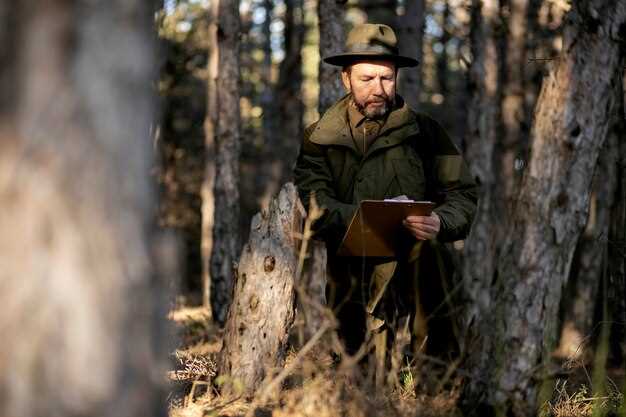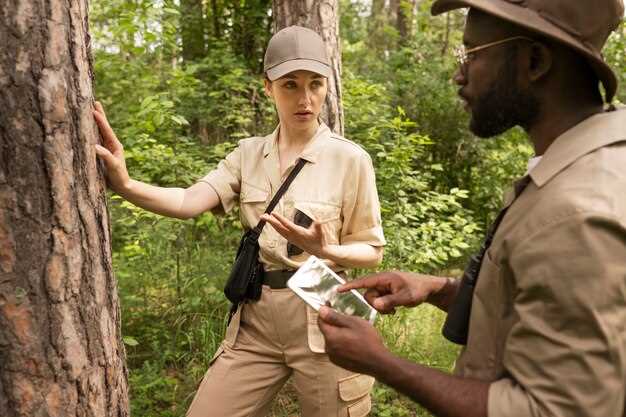Essential Survival Skills Every Hunter Should Master

Hunting is not merely a sport or a pastime; it is a vital skill that connects us with nature and our ancestors. To be a successful hunter, one must develop a range of skills that go beyond marksmanship and tracking. These skills are essential for both the hunt itself and for ensuring personal safety in the wilderness.
Survival in the wild requires an understanding of various environmental factors such as weather changes, animal behavior, and terrain navigation. Learning these skills can mean the difference between a successful hunt and a perilous situation. Mastering how to read the signs in nature will significantly enhance a hunter’s ability to locate game and make informed decisions.
Furthermore, practical know-how in areas such as first aid, fire building, and shelter construction cannot be overstated. These aspects of survival are critical for any hunter, as emergencies can arise unexpectedly. Equipping oneself with these essential skills not only increases the chances of a successful outing but also fosters a greater appreciation for the wilderness.
Mastering Tracking Techniques for Game Identification

Effective tracking is one of the essential survival skills every hunter must develop. Understanding how to identify animal tracks can significantly enhance your hunting success and improve your overall wilderness survival ability. The first step in mastering tracking techniques involves recognizing distinctive footprints left by various animals. Each species has unique traits, such as size, shape, and the number of toes, which can help you determine the type of game that has passed through an area.
Additionally, observing the depth and width of tracks provides insights into the animal’s weight and speed. A fresh, deep track indicates a heavier animal moving quickly, while a shallow, faded track suggests the animal is lighter or has been there for some time. Hunters should familiarize themselves with common wildlife in their region, as this knowledge allows for rapid identification of tracks and behaviors.
Beyond footprints, other signs are equally crucial in tracking game. Scat, scrapes, and rubs can reveal the presence of specific animals and their feeding habits. Fresh scat indicates recent activity, while the type of vegetation disturbed can give clues about what the animal consumes. Learning to interpret these signs will help hunters determine the best locations for setting up their gear.
Weather conditions also play a vital role in tracking. Rain and wind can obliterate tracks, while snow can preserve them, making it easier to follow an animal’s trail. Adapting your tracking techniques to different environmental factors enhances your skills and increases chances of success in various situations.
Finally, patience and practice are crucial in mastering tracking techniques. Spend time in nature to observe and follow tracks, recognizing patterns and behaviors. The more you practice these skills, the more adept you will become at quickly identifying game and understanding their movements, significantly improving your effectiveness as a hunter.
Building and Maintaining a Safe Camp in the Wilderness
When embarking on a hunting expedition, establishing a secure campsite is essential for survival. A well-planned camp serves as both a base for your hunting activities and a refuge against the unpredictable elements of nature.
Choose the Right Location: Select a campsite away from potential hazards, such as falling branches or flooding areas. Look for flat, dry ground near a water source, but ensure you’re a safe distance away to avoid flooding. Assess wind patterns to position your tent in a way that minimizes exposure to harsh winds, while also considering sunlight to keep the area warm during cold nights.
Set Up Proper Shelter: Your shelter must be sturdy enough to withstand adverse weather conditions. When erecting a tent, make sure it’s securely anchored and that the rainfly is properly fitted to prevent water from seeping in. For more permanent setups, consider building a simple lean-to structure using fallen branches and foliage, ensuring it’s insulated against cold temperatures.
Fire Safety: A fire provides warmth, light, and a means for cooking food, making it crucial for survival in the wilderness. Build your fire in a designated fire pit, clear of debris and overhanging branches. Always have a bucket of water or sand nearby to extinguish the fire completely when finished. Furthermore, consider using safe cooking methods to avoid the risk of wildfires while offering hot meals during your hunting trip.
Keep Your Camp Organized: A cluttered campsite can lead to accidents and attract wildlife. Designate specific areas for cooking, eating, and sleeping. Store food securely, preferably in bear-proof containers or hung from a tree, to prevent animal encounters.
Maintain Hygiene: Keeping a clean camp is vital for your health and safety. Dispose of waste properly and practice good hygiene to avoid contamination. Store toiletries away from cooking and sleeping areas to keep your campsite fresh and free from unwanted pests.
Regularly Assess the Environment: Stay vigilant about your surroundings. Periodically check for natural threats, such as changing weather conditions or signs of wildlife nearby. This awareness helps ensure you adapt your camp setup as necessary, contributing to your overall safety and success in hunting.
In conclusion, a safe camp is a foundational element of a successful wilderness hunting experience. By following these guidelines for building and maintaining your campsite, you enhance your chances of survival and create a comfortable environment for your hunting endeavors.
Foraging for Edible Plants and Emergency Food Sources
Foraging for edible plants is a crucial survival skill that every hunter should master. The ability to identify and gather wild, nutritious food can make a significant difference during long hunts or unexpected emergencies. Understand the flora in your region by learning to recognize edible plants, mushrooms, and berries. This knowledge not only enhances your diet but also reinforces your overall survival strategy.
Beginners must start with the basics, learning the most common edible plants like dandelions, wild asparagus, and clover. Distinguishing between safe and toxic varieties is vital; hence, a reputable field guide or an experienced mentor can greatly aid this process. When foraging, favor well-known local plants, as misidentification can lead to serious health risks.
Seasonal awareness is essential; certain plants only appear during specific times of the year. Late spring and early summer are ideal for gathering greens, while autumn brings a bounty of nuts and fruits. Additionally, understanding the habitats where edible plants grow can improve your foraging efficiency. Areas near water sources or in open meadows often yield richer finds.
Emergency food sources can extend beyond plants. In survival situations, hunters should also be familiar with fishing and trapping small animals. Combining these methods increases food availability, which is vital when traditional hunting methods might fail. Lastly, practice responsible foraging–only take what you need and ensure the sustainability of plant populations for future use.
